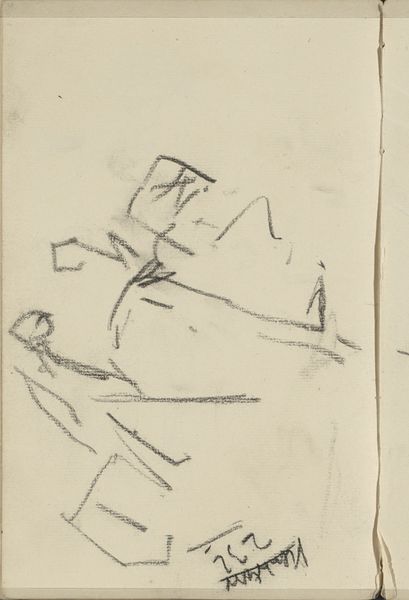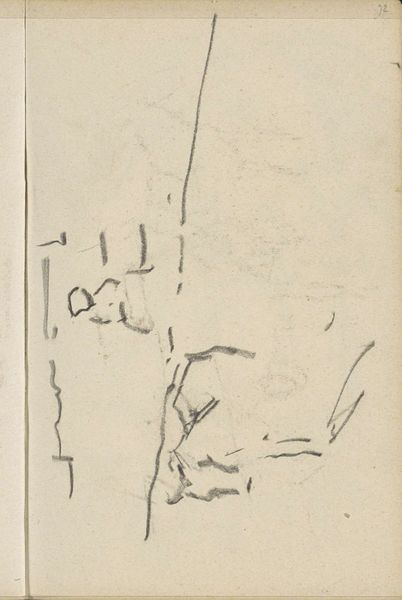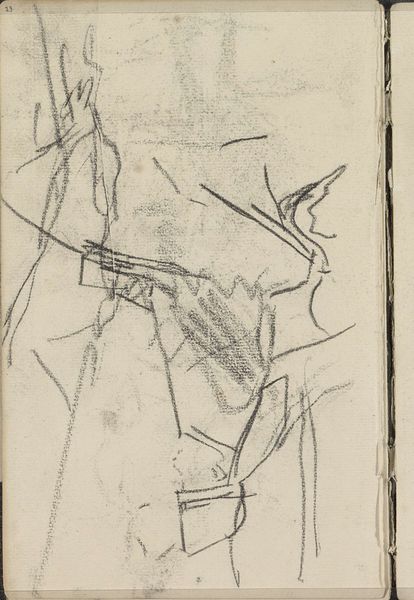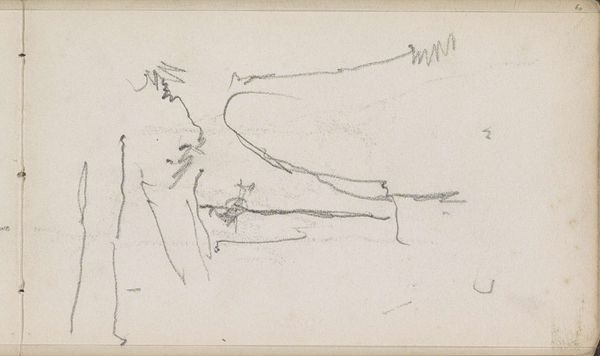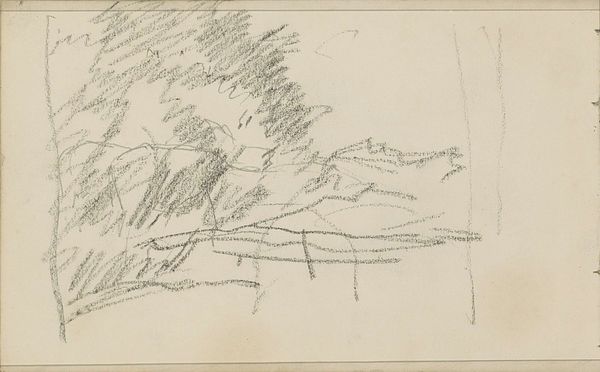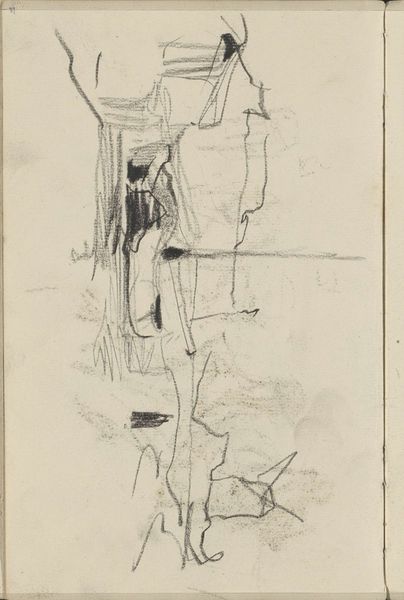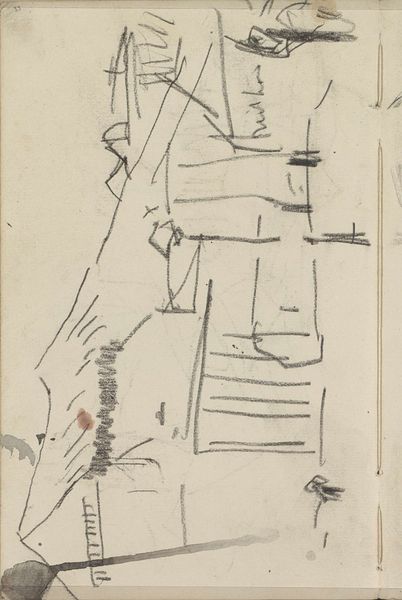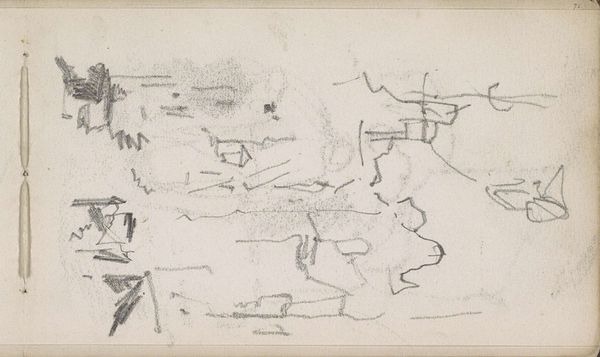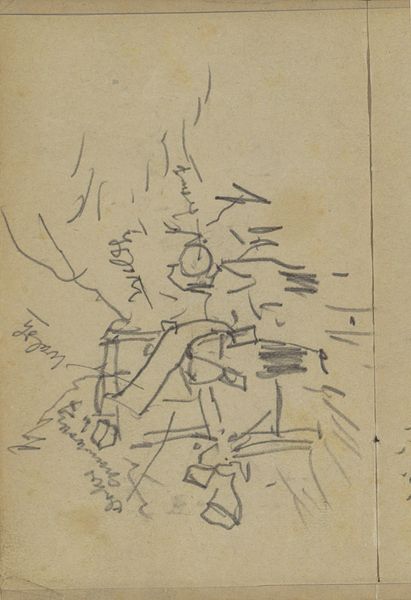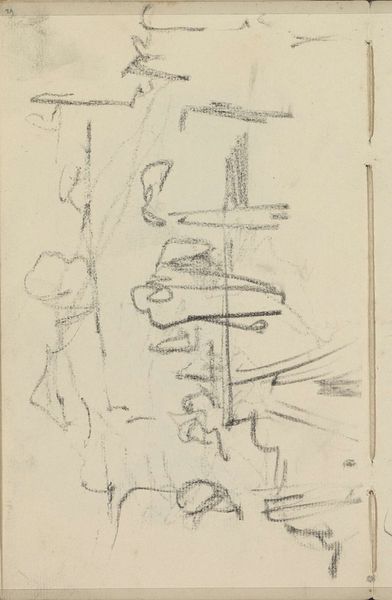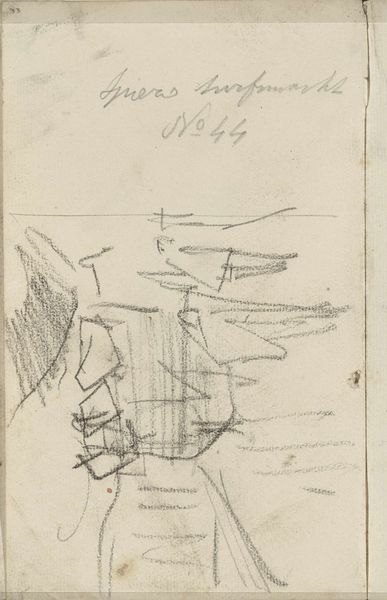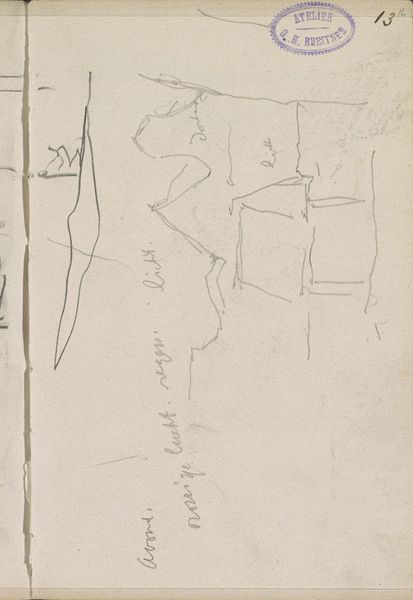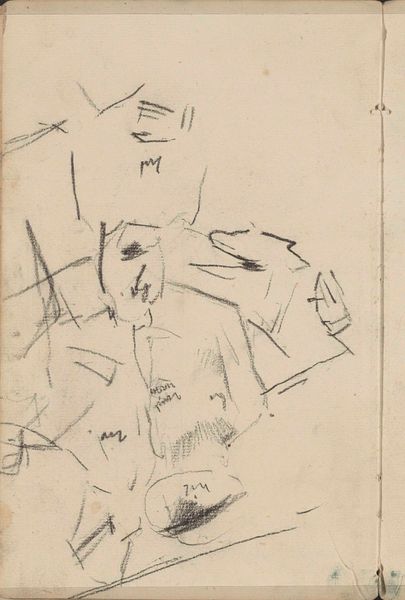
drawing, pencil
#
drawing
#
amateur sketch
#
light pencil work
#
incomplete sketchy
#
personal sketchbook
#
idea generation sketch
#
ink drawing experimentation
#
pen-ink sketch
#
pencil
#
abstraction
#
line
#
sketchbook drawing
#
sketchbook art
#
initial sketch
Copyright: Rijks Museum: Open Domain
Editor: Here we have "Studie" by George Hendrik Breitner, created sometime between 1883 and 1885. It appears to be a pencil drawing. I'm struck by how minimal it is. It looks like a very early sketch, raw and unfiltered. What stands out to you as you look at this piece? Curator: This sketch provides an intimate glimpse into Breitner’s working process, and by extension, the changing role of art in Dutch society at the time. What looks "minimal" to us was, in the late 19th century, a radical shift. Art academies still prized highly finished, polished works, rooted in historical narratives. Breitner, however, belonged to a generation interested in capturing the fleeting, gritty reality of modern life – think of the rise of photography at that time and its influence on art. How do you see the "unfinished" quality of the work influencing its message, considering that shift? Editor: I guess that makes sense. Because it's so immediate, the sketch gives you a sense of the artist trying to capture a moment or an idea as quickly as possible, more about the experience of seeing rather than depicting something perfectly. Curator: Exactly! Consider also that Breitner associated with literary circles championing realism and naturalism – movements dedicated to portraying the everyday lives of ordinary people. In this light, would it be too far to consider the unfinished quality of his sketch a means to move away from a more aristocratic past and its veneration of beauty and status? How can the medium and this sketchy approach reflect the democratizing trends happening around that time? Editor: That's fascinating. I never really considered the politics of the incomplete! So, by leaving it as a sketch, he is, in a way, bringing art closer to the everyday, unpolished world? Curator: Precisely. And challenging established norms around what constitutes 'finished' or 'worthy' art, while he democratizes the access to art by making it mundane and everyday, don't you think? Editor: I see what you mean. I definitely look at it differently now. I’m more aware of the social context. Curator: Hopefully you have a clearer view on how looking at this artwork may challenge and re-evaluate the place art takes within history, both for artists and for us, the audience.
Comments
No comments
Be the first to comment and join the conversation on the ultimate creative platform.
